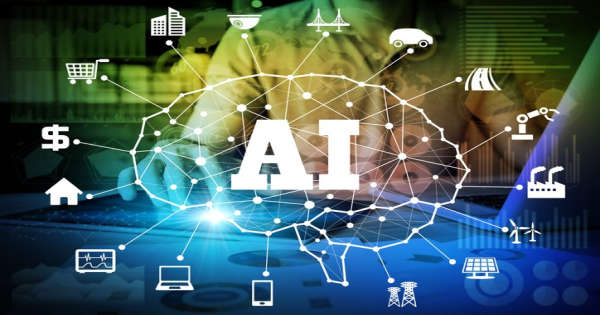In the ever-evolving realm of technology, computers have transitioned from simple calculators to powerful machines capable of solving complex mathematical equations, simulating molecular interactions, and even driving autonomous vehicles. Yet, the true potential of computers might lie not just in addressing problems we already understand, but in solving problems that we don’t even know how to define yet. From quantum computing to artificial intelligence, a paradigm shift is unfolding — one that promises solutions beyond human comprehension.

The New Frontier of Problem Solving
Humans have always used tools to extend their capabilities. The hammer extended our ability to strike, the telescope extended our vision, and the computer extended our brain. But what if a tool could do more than just extend our capacity? What if it could help us discover problems, formulate questions, and propose solutions we could never imagine on our own?
This is the emerging power of advanced computing — an evolution that could reshape our understanding of science, medicine, economics, and even reality itself.
The Limitations of Human Understanding
Before diving into how computers might transcend our understanding, it’s important to recognize the limitations of human cognition. Our brains evolved to survive, not necessarily to comprehend quantum mechanics or the mysteries of dark matter. We are bounded by:
-
Limited memory and processing power
-
Cognitive biases
-
Subjective experiences
-
Time constraints in learning
These limitations make it difficult for us to detect patterns in massive datasets, simulate complex ecosystems, or even understand the rules of systems that don’t conform to classical logic.
Artificial Intelligence: Discovering Insights Beyond Our Reach
One of the most promising avenues for solving unknown problems is artificial intelligence (AI), particularly machine learning and deep learning.
1. Pattern Recognition in Complex Data
AI can process and analyze massive datasets — far beyond human capabilities. For example:
-
Medical Diagnosis: AI systems have discovered patterns in diagnostic imaging that even expert radiologists have missed.
-
Drug Discovery: Machine learning algorithms have predicted molecular behaviors and suggested potential drug candidates faster than any human team.
These aren't just examples of efficiency — they represent qualitatively new ways of discovering insights we didn’t know to look for.
2. Generative AI and Problem Creation
Recent breakthroughs in generative AI show us that machines can do more than analyze existing data — they can create. From generating original artwork to proposing new mathematical theorems, generative AI can:
-
Simulate realities based on incomplete data
-
Suggest experiments or hypotheses for scientific testing
-
Create new programming languages or algorithms optimized for specific problems
This represents a shift from tool-based problem solving to collaborative discovery.
Quantum Computing: Solving the Unsolvable
Another revolutionary technology that promises to help us tackle unknown problems is quantum computing.
1. The Power of Superposition and Entanglement
Unlike classical bits (which are 0 or 1), quantum bits (qubits) can be in multiple states simultaneously. This allows quantum computers to:
-
Perform many calculations at once
-
Simulate quantum phenomena, such as molecular interactions, more accurately than classical computers
-
Solve optimization problems that are currently intractable
2. Problems We Can't Even Frame Yet
Quantum computers may help answer questions we can't currently define due to:
-
Lack of observable data (e.g., the nature of consciousness)
-
Non-classical behaviors (e.g., quantum tunneling)
-
Undecidable problems in mathematics
For example, quantum algorithms could someday uncover new dimensions in physics or simulate alternate universes to understand how different constants of nature affect reality.
Evolutionary Algorithms: Mimicking Nature’s Problem Solving
Inspired by Darwinian evolution, evolutionary algorithms work by generating many solutions, selecting the best ones, and “breeding” them for better performance.
1. Open-Ended Exploration
These algorithms have already been used in:
-
Robotics: Designing physical forms and control systems for walking robots
-
Aerospace: Generating aerodynamically superior aircraft wing structures
What makes them exciting is their open-endedness. Unlike traditional software, evolutionary algorithms don’t require predefined problem statements. They explore possibilities, often arriving at unconventional but effective solutions.
Neuromorphic Computing: Thinking Like the Brain
Neuromorphic computing involves building systems that mimic the architecture and function of the human brain. These systems can adapt, learn, and respond in real time to changing environments.
1. Self-Learning Systems
Neuromorphic systems could one day:
-
Create models of ecosystems to predict unknown risks
-
Simulate brain disorders to understand emergent behaviors
-
Understand and adapt to entirely novel environments
Such adaptability is critical in scenarios where problems evolve too quickly for human comprehension — such as climate change, cybersecurity, or space exploration.
Real-World Examples of "Unknowable" Problem Solving
1. AlphaFold and Protein Folding
DeepMind’s AlphaFold AI solved a 50-year-old problem in biology — how proteins fold — by predicting structures more accurately than ever before. Researchers didn't even know what data patterns to look for, yet AlphaFold uncovered them.
2. DALL·E and Creative Generation
OpenAI’s DALL·E system generates images from textual descriptions, often producing visual concepts that are novel to humans. This proves that computers can visualize abstractions and create representations of things that don’t exist — an essential step in solving uncharted problems.
3. LIGO and Gravitational Waves
The detection of gravitational waves involved massive computing resources and data analysis methods. The algorithms used could detect anomalies and trigger alerts without fully understanding what the signal meant — illustrating computers acting as extensions of human discovery.
The Philosophical Shift: What Counts as "Understanding"?
As computers become capable of solving increasingly abstract or undefined problems, we may need to rethink the meaning of understanding itself.
Do we need to understand how a solution works if it produces valid and useful results?
For instance:
-
If an AI recommends a drug combination that cures a rare disease, is that a breakthrough even if no human can explain why it works?
-
If a quantum algorithm provides a model of a physical phenomenon that perfectly predicts reality, does it matter if we don’t grasp the underlying principles?
This poses an existential question: Will computers become our co-creators of knowledge, rather than mere tools?
Ethical and Existential Concerns
1. Trust and Transparency
As machines solve complex and undefined problems, they may produce “black box” solutions — outputs with no clear reasoning behind them. This challenges:
-
Medical ethics (e.g., can we trust AI diagnoses we don’t understand?)
-
Legal systems (e.g., can we allow algorithms to make policy recommendations?)
-
Scientific integrity (e.g., can unexplainable models still be considered valid?)
2. Dependency on Machines
As we rely more on computers for higher-level thinking, we risk intellectual dependency. Will future generations lose the ability to think independently or question machine logic?
3. Redefining Human Purpose
If computers surpass us in creativity, logic, and innovation, where does that leave humanity? Perhaps our role will shift from problem solvers to problem curators — guiding intelligent systems toward ethically aligned goals.
The Role of Human-Machine Collaboration
Despite the rise of autonomous computing, the most fruitful path likely lies in collaborative intelligence — humans and machines working together.
-
Humans provide context, ethics, and goals
-
Machines provide processing power, pattern recognition, and scalability
Together, this symbiosis can allow for breakthroughs that neither could achieve alone.
Future Outlook: What Lies Ahead?
In the coming decades, we may witness computers that:
-
Define research problems in unexplored scientific fields
-
Design entire ecosystems for colonizing other planets
-
Propose economic models to prevent global collapses
-
Interpret alien languages or signals
-
Simulate philosophical thought experiments with real-world implications
These are not far-fetched science fiction dreams — many are already in early development stages.
Ilmkidunya
Top Contributors
Related Articles
From Curiosity to Career A Purpose-Driven Journey Through the 4D Growth Framework
- Ilmkidunya
- 10/Jun/2025




.gif)







































